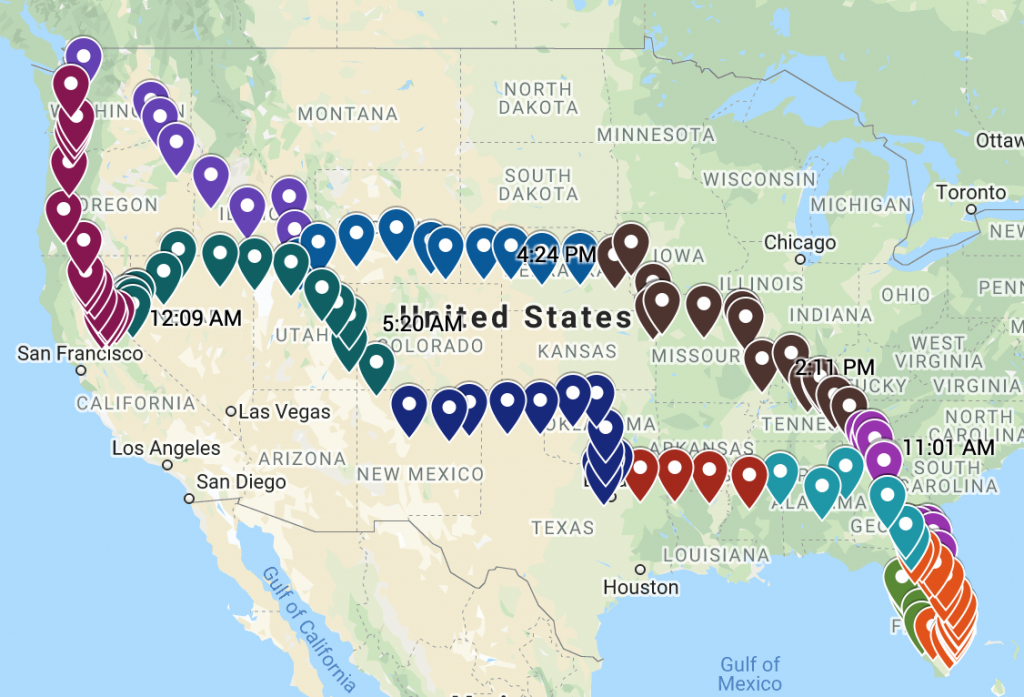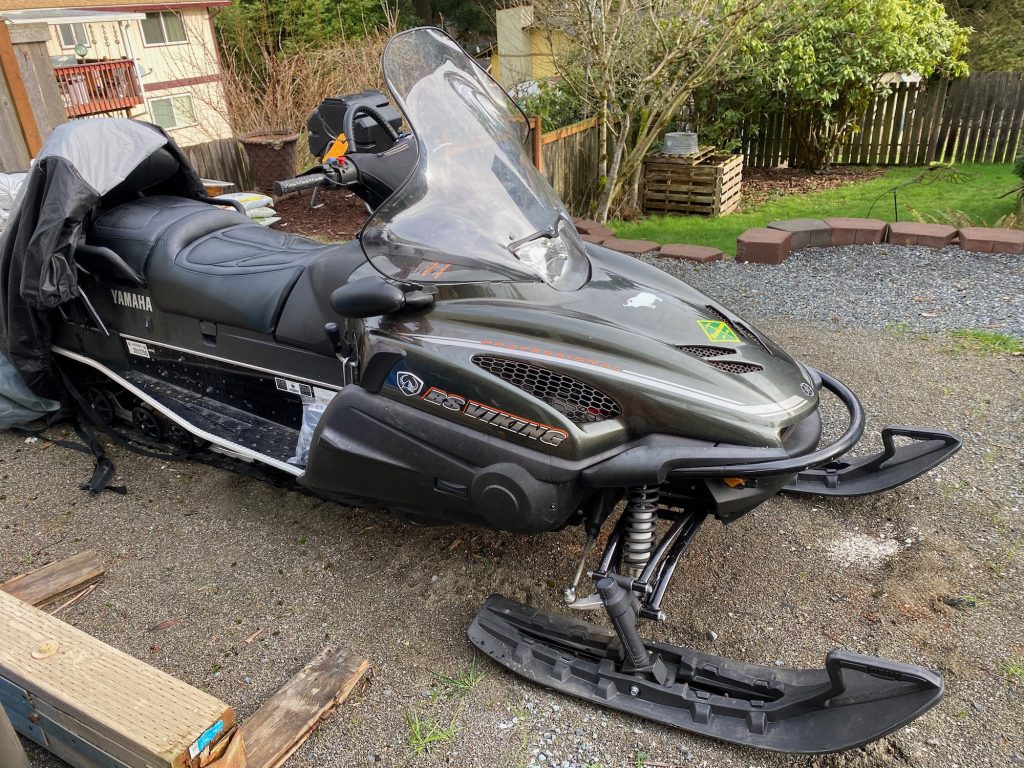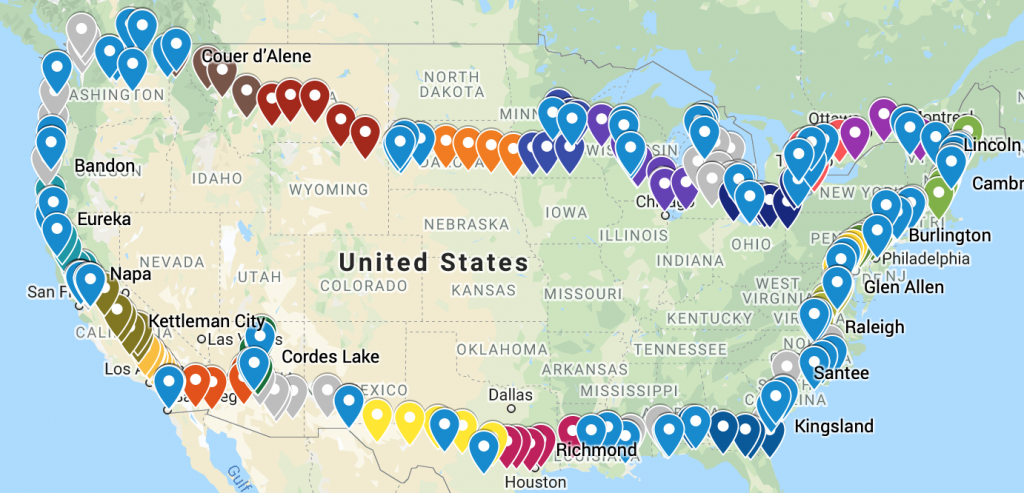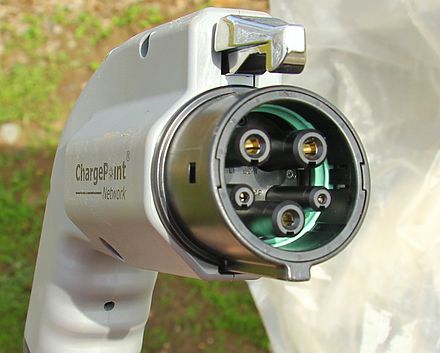In July of 2020, we purchased a 600 watt dual-motor AWD fat-tire e-bike from ecells.com. The bike has a motor in each wheel. The frame is super beefy and fairly heavy. It has been a hoot. Mostly we ride it on paved urban trails here in town, where the beefy frame and rack lets it excel at hauling home groceries. It’s more at home out at Meany Lodge where we ride it up and down forest roads in the mountains where the low-pressure fat tires provide abundant traction and good suspension. It can really haul on the loose gravel roads.
Last weekend I took it on a ride near Mailbox Peak with a group of friends. The bike did quite well at helping me ride up the mountain like I was 20 years younger and 20 pounds lighter. Where it wasn’t so awesome was blasting down the no-longer-maintained-and-sometimes-washed-out logging roads. I wanted to downhill hard and fast, like on my still-awesome Raleigh M-800 mountain bike. The E-cells brakes need to stop 70# of bike, 10# of gear, and me, while thrashing downhill at 30-35mph. I was experiencing significant brake fade and needing to plan my braking. The brakes lack authority. So I went shopping for upgrades and learned a few things.
Brake Pad Types
- metallic – longest life, greatest stopping power, more noisy
- organic/resin – quiet, good initial bite, glaze over / fade under heavy braking
- semi-metallic – combination of the two
The pads that came with my bike are Tektro A10.11, which is a sintered (semi-metallic) ceramic pad. That pad is no longer listed on the Tektro web site. The nearest OEM replacement is the E10.11 ($15), which is sintered organic. A higher performance metallic pad is the Tektro P20.11 ($24) which I have ordered. They provide a small boost in stopping power, but more importantly, they won’t fade under prolonged heavy braking.
Rotor Size
Bike rotor sizes start at 140mm and go up. The increased diameter of larger rotors provides more mechanical advantage so less friction is required to get the same stopping power. Larger rotors provide more thermal mass to absorb heat and more surface area to dissipate heat. Common e-bike rotor sizes are: 160, 180, and 203mm. Most e-bike forks are set up for 160mm rotors. Cheap ($10-15) adapters enable those forks to work with 180 and 203mm rotors.
The E-cells 600 comes with Tektro Aries mechanical disc brakes on 160mm rotors (front and rear) with adapters. Because the front wheel provides ~70% of the stopping power, it’s quite common to use larger front rotors: eg. 203mm on the front and 180mm on the rear. The higher spec E-cells 700 and 1000 models have exactly that setup with hydraulic calipers.
Disc Brake Types
• Mechanical disc brakes are inexpensive, reliable, and solidly better than rim and other brakes of yesteryear. Like legacy brake systems, they are cable actuated. They have a single moving piston which warps the brake disc into the other pad, compressing it and providing braking power.
• Hydraulic disc brakes replace the wire cable with hydraulic fluid (DOT or mineral oil) which provides equal force on two opposing pistons. The reduced friction and doubling of pistons provides more braking power with less effort. Testing (varies a LOT based on bike and system) shows a 40-70% reduction in braking distance with hydraulic disc brakes.
• Hydraulic 4-piston disc brakes are fairly new, fairly rare, and expensive. They are the go-to option for higher speed (22+ mph) and cargo eBikes. The piston engagement is progressive: you initially get two pistons braking and as the rider pulls harder, all 4 engage for massive stopping power. That much braking power would be dangerous on lighter bikes, but it’s needed for fast downhills on heavy bikes. ? ? ?
• Hybrid: there exists a hybrid, the Juin Tech M1 cable actuated hydraulic brake. They’re intriguing, promising substantially better stopping power than mechanical disc brakes for a modest upgrade ($160) price and a very simple install. The only “not paid” review data I found is that they are an incremental improvement upon mechanical disc brakes, not a step-change improvement like going from mechanical to hydraulic.
e-bike brakes
Another layer of complexity added to e-bike brakes is that the brake levers need cutout switches that disengage the motor when braking. The vast majority of bicycle brake systems don’t have this feature.
Combine the newness of 4-piston brakes with the much smaller ecosystem of brake levers with cutoffs for e-bikes and the choices get very narrow. As in, the full list is: Tektro E-725, Magura MT-5, Magura MT-7. I opted for the Tektro because the Magura’s have plastic fluid reservoirs.
The switch to metallic pads and 4-piston brakes should suffice. If not, my next move will be upsizing the front rotor to 203mm, for another ~12% increase in braking power.






You must be logged in to post a comment.